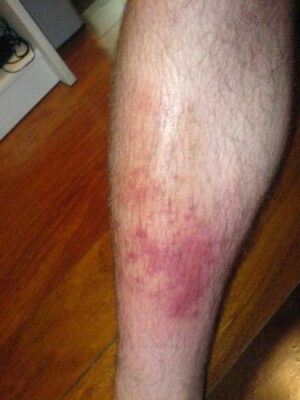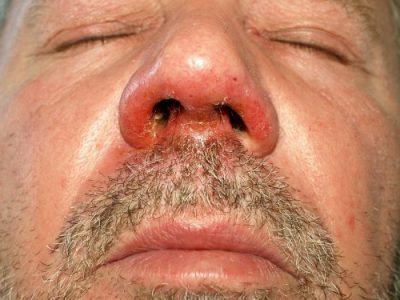Certainly, when doctors and hospitals are available, we should always consult a physician before taking any medication. In times of disaster, when no one else is there for you, it is up to you and your family to choose the best course of action.
You can find the following antibiotics in fish medicines:
- Amoxicillin
- Ampicillin
- Azithromycin
- Cephalexin
- Ciprofloxacin
- Clindamycin
- Doxycycline
- Metronidazole
- Sulfamethoxazole
- Trimethoprim
When the only other option is almost certain death, the choices can be pretty easy. It would be best if you had survival antibiotics. In most cases, this means using fish antibiotics for humans.
Looking to subject matter experts like the authors of the Doom and Bloom blog, we can better understand the benefits and dangers of using fish antibiotics for humans. Many animal medications are the exact dosage and have the same markings as human medications.
Dakin’s solution is a great homemade topical antiseptic.
Those who speak out against fish antibiotics often argue that they can contain impurities and other additives that may not be fit for human consumption. Some animal medications do contain additives that humans should not consume.
Best Fish Antibiotics for Long-Term Storage
By using the following criteria, we can examine the animal medications that are best for us to store.
- The medication should be in dosages that are normally prescribed to humans.
- The only ingredient should be the medication itself. (Some contain additives that have benefits for certain types of animals.)
- The pills’ markings should match those normally prescribed to humans.
If you use this list to evaluate animal medications, then you should be good to store them for use following a collapse.
Medication stored for disasters
Antibiotics (sometimes referred to as antibacterials) are used to treat bacterial infections. Any infections caused by fungal or viral infections will not be affected by antibiotics.
Antibiotics are normally given orally and can start affecting the infection within a couple of hours. Once you begin taking antibiotics, it’s important to continue to take them until the infection is gone.
Stopping early can allow the infection to return and possibly come back in a form resistant to the antibiotics you previously used.
The discovery of antibiotics is seen as one of the greatest advances in modern medicine. In an extended disaster, having them on hand can mean the difference between life and death!
Open wounds are more likely to get infected. Make sure you know how to use steri-strips to close a wound.
How to Identify a Bacterial Infection
Keep in mind that these symptoms are sometimes shared with viral infections. However, they are still a good indicator of a bacterial infection.
- Dark green mucus is typically associated with a bacterial infection.
- White spots in the throat or a sore throat with no other symptoms. (Such as sneezing or a runny nose.)
- High fever – Both viral and bacterial infections can cause a fever, but bacterial infections typically present with much higher fevers.
Common Diseases Associated with Bacterial Infections
Skin Diseases
- Cellulitis – a painful, red infection that is usually warm to the touch. Cellulitis occurs most often on the legs, but it can appear anywhere on the body.

- Folliculitis – an infection of the hair follicles that causes red, swollen bumps that look like pimples. Improperly treated pools or hot tubs can harbor bacteria that cause folliculitis.

- Impetigo – oozing sores, usually in preschool-aged children. The bullous form of impetigo causes large blisters, while the non-bullous form has a yellow, crusted appearance.

- Boils – deep skin infections that start in hair follicles. Boils are firm, red, tender bumps that progress until pus accumulates underneath the skin.
Food Poisoning
I suspect that bacterial infections caused by food poisoning will be very common following some form of collapse. Desperate people will end up eating food that should not be eaten, and our bodies will not react well to some food items that we are unaccustomed to, like unpasteurized milk.
Unsanitary food handling can spread bacteria as well. In an SHTF environment, you will need to make cleanliness a priority.
Raw meat, fish, eggs, poultry, and unpasteurized dairy can all hold harmful bacteria that can cause illness.
Sexually Transmitted Diseases
- Chlamydia
- Gonorrhea, also known as “clap” and “the drip.”
- Syphilis can affect men and women and is caused by the bacteria Treponema pallidum. Untreated syphilis can be fatal.
- Bacterial vaginosis causes an overgrowth of pathogenic bacteria.
Other Diseases
- Bacterial meningitis is an infection of the meninges, the brain’s lining.
- Infection or inflammation of the middle ear. Either viruses or bacteria can cause it.
- Urinary tract infection (UTI) – a bacterial infection of the bladder, urethra, kidneys, or ureters.
- Respiratory tract infections include a sore throat, bronchitis, sinusitis, and pneumonia. Either viruses or bacteria can cause it. Tuberculosis is one form of bacterial respiratory tract infection.
Commonly Prescribed Dosages
The following are the normal dosage levels prescribed for human use. When using fish antibiotics for humans, these are good guidelines for dosages that you can try.
- Amoxicillin 250mg / 500mg
- Ampicillin 250mg / 500mg
- Azithromycin 250mg
- Cephalexin 250mg / 500mg
- Ciprofloxacin 250mg / 500mg
- Clindamycin 300mg
- Doxycycline 100mg
- Metronidazole 250mg
- Sulfamethoxazole 400mg
- Trimethoprim 80mg
Uses for Antibiotics and Products That Contain Them
As with any medical information provided on this site, this is provided for informational purposes only and is not a recommendation by anyone here at Ready Lifestyle. Always consult a physician before taking any medication! This is especially true when you’re considering taking something like fish antibiotics.
Fish antibiotics, as well as other animal antibiotics, can contain antibiotics that are usable by humans. The exact product names of the fish antibiotics may change over time. The key thing to remember is that their ingredients make them useful to us, not the name or brand.
- Amoxicillin – Amoxicillin is used to treat many infections, such as tonsillitis, bronchitis, pneumonia, gonorrhea, and infections of the ear, nose, throat, skin, or urinary tract. It can be found in Fin Mox Forte and other fish antibiotics. The dosage varies by disease, but the most common dosage for an adult is 500mg / 3 times a day for 10-14 days.
- Azithromycin – Azithromycin is used to treat many infections caused by bacteria, such as respiratory infections, skin infections, ear infections, and sexually transmitted diseases. It can be found in Fin Zithro. Azithromycin is commonly known as a Z-Pac. The dosage is typically 500mg for the 1st day and 250mg from days 2-5.
- Cephalexin – Cephalexin is used to treat infections caused by bacteria, including upper respiratory infections, ear infections, skin infections, and urinary tract infections. It can be found in Fin Flex. The typical dosage is 250mg every 6 hours or 500mg every 12 hours for 10-14 days.
- Ciprofloxacin – Ciprofloxacin is used to treat different types of bacterial infections and is also used to treat people who have been exposed to anthrax or certain types of Plague. Ciprofloxacin should be used only for infections that cannot be treated with a safer antibiotic. It can be found in Fin Flox. For treatment of Anthrax exposure, the normal dose is 500mg every 12 hours for 60 days. For treatment of the Plague, the dosage is 500-750mg every 12 hours for 14 days. 500-750mg every 12 hours for 7-14 days is recommended for treating Pneumonia and Bronchitis. For the treatment of many forms of water and foodborne diseases (such as Shigella, E Coli, and infectious diarrhea), 500mg every 12 hours for 5-7 days is recommended.
- Sulfamethoxazole and Trimethoprim-Sulfamethoxazole and trimethoprim are a combination antibiotic used to treat ear infections, urinary tract infections, bronchitis, traveler’s diarrhea, shigellosis, and Pneumocystis jiroveci pneumonia. They can be found in Fin Sulfa Forte at 800mg Sulfamethoxazole and 160mg Trimethoprim per pill. It’s taken in dosages of 800mg Sulfamethoxazole and 160mg Trimethoprim for up to 14 days.
All dosage information was found on Drugs.com. The site has great information on common drug usage and dosages. The site also has an extensive pill identifier.
Common side effects of fish antibiotics:
Keep in mind that these side effects aren’t only for fish antibiotics. These are the side effects associated with all antibiotics.
- Diarrhea (Keep in mind that anything that causes diarrhea can mean death if you are in a situation where clean drinking water is limited.)
- Feeling sick
- Fungal infections of the mouth and digestive tract.
Some very rare conditions can arise with the use of antibiotics, such as:
- Formation of kidney stones (when taking sulphonamides)
- Abnormal blood clotting (when taking some cephalosporins)
- Sensitivity to sunlight (when taking tetracyclines)
- Blood disorders (when taking trimethoprim)
- Deafness (when taking erythromycin and the aminoglycosides)
Common forms of allergic reactions are:
- Rash
- Swelling of the tongue and face
- Difficulty breathing
Expiration of Antibiotics
The Food and Drug Administration did a test for the U.S. military called the Shelf Life Extension Program. This program reviewed medications to determine if they maintained their potency and were safe to take after their shelf life expiration.
Of the medications tested, 88% were extended for an average of 66 months. This was conducted on medications that were in their original containers.
To ensure the best shelf life of medications, keep them in their original containers in a cool, dry place. This will give them the best chance of keeping their potency.
These drugs are great to store in bulk if you’re concerned about a future collapse or SHTF event. You can buy them freely from places like Amazon without a prescription; most contain the same ingredients as a prescribed medication.
Conclusion
By understanding a few key things about fish antibiotics, you will be able to identify the antibiotics useful for treating common human diseases after a disaster.
We’re not recommending you use fish antibiotics for humans unless it’s an absolute life-and-death situation. All medications have their risks, and fish antibiotics are no different.
Using fish antibiotics for humans has the potential to save lives, but it also has the potential for negative side effects. The decision to take fish antibiotics is yours and yours alone!

